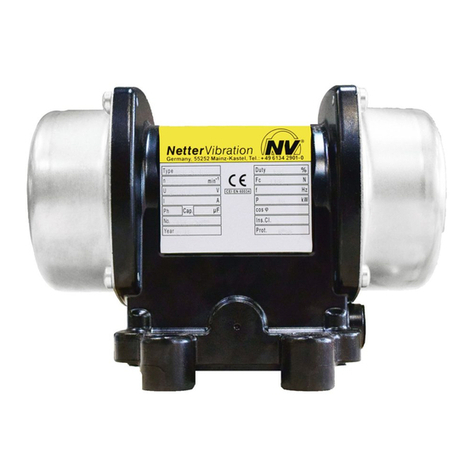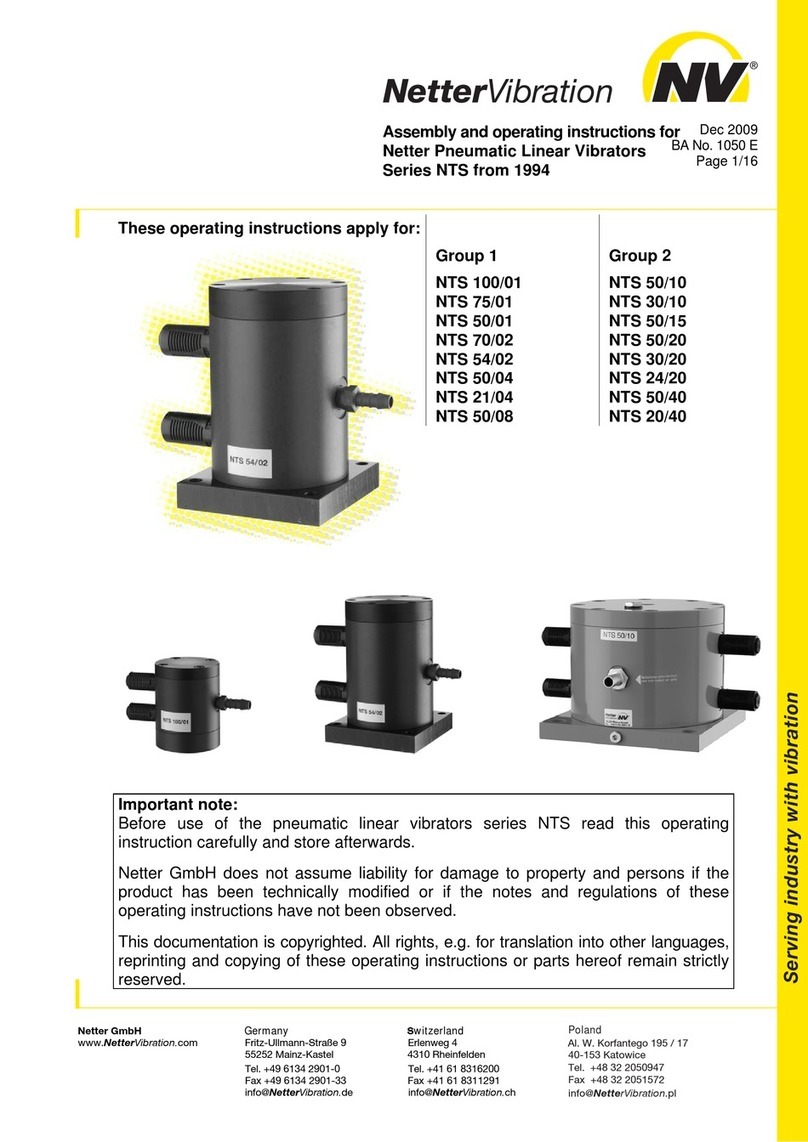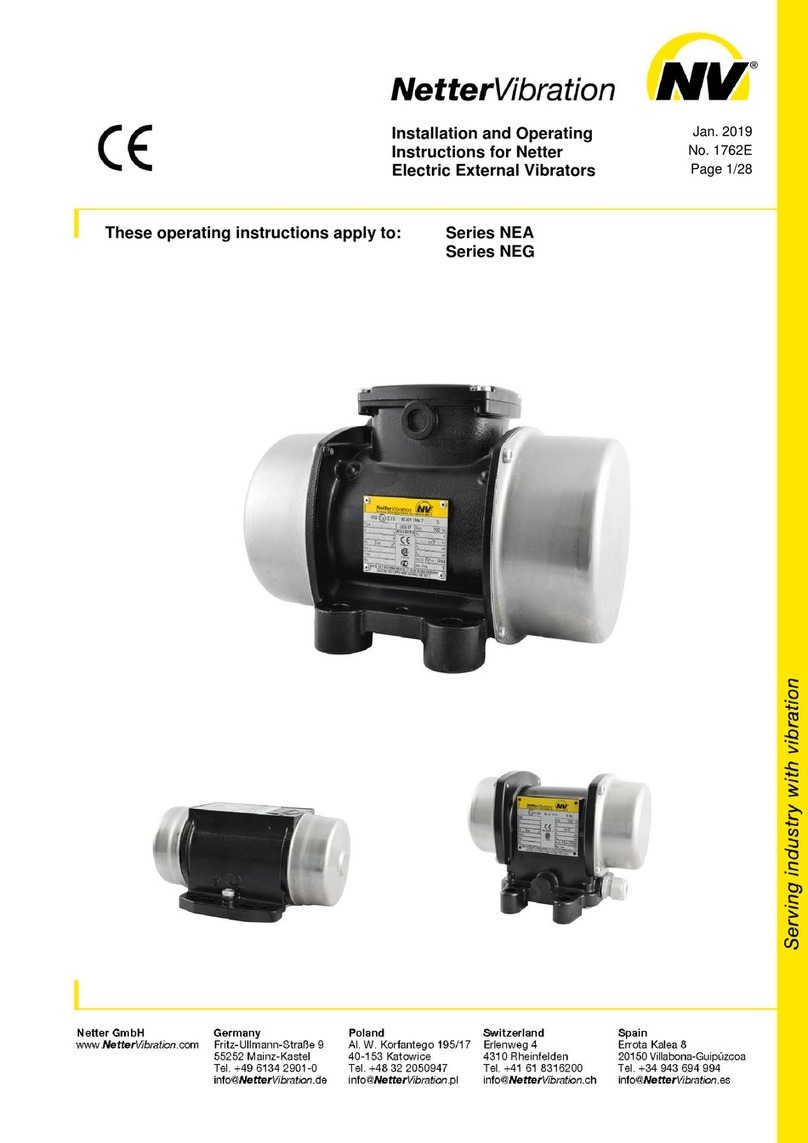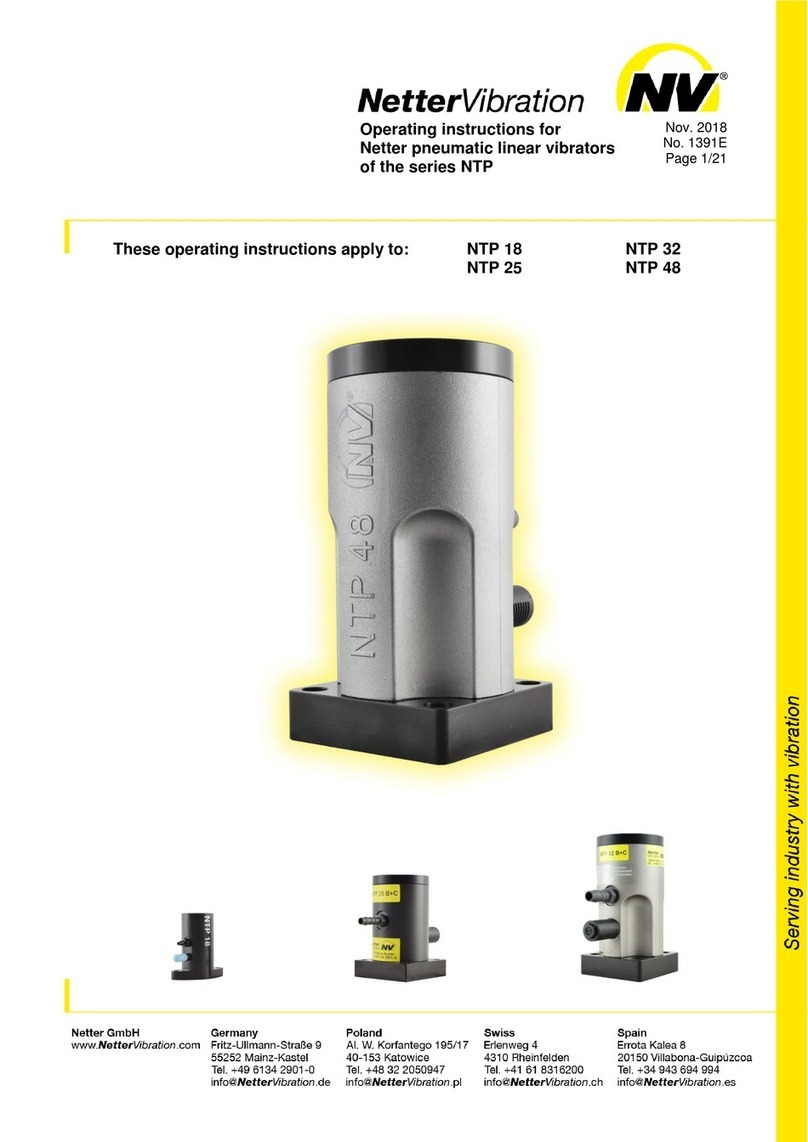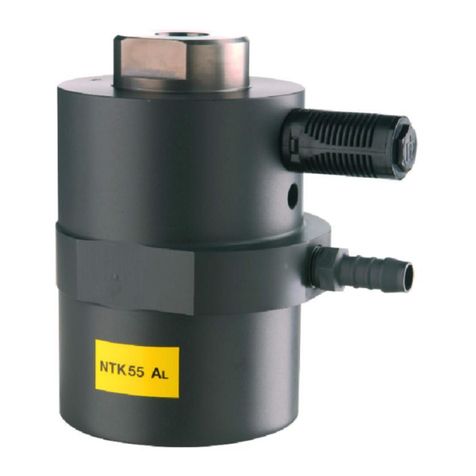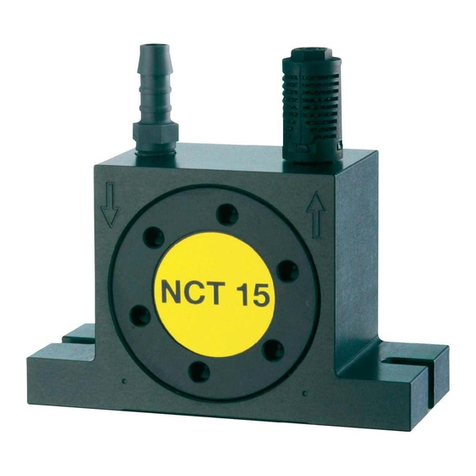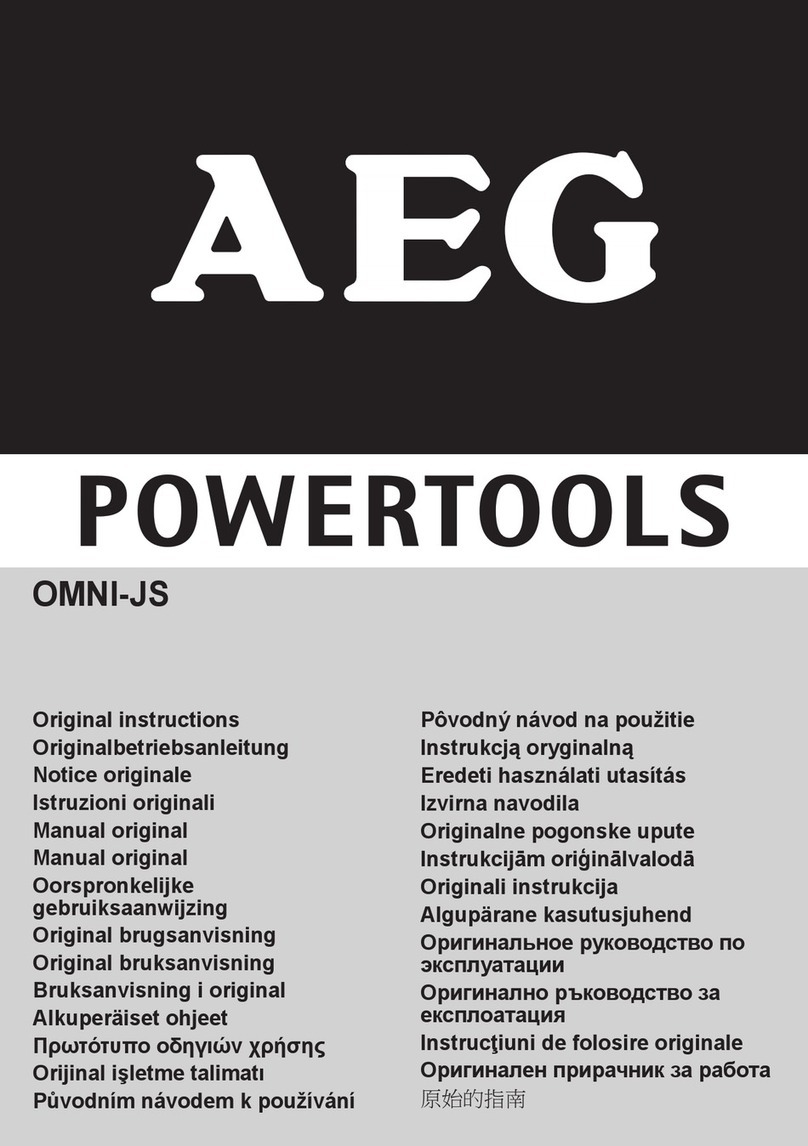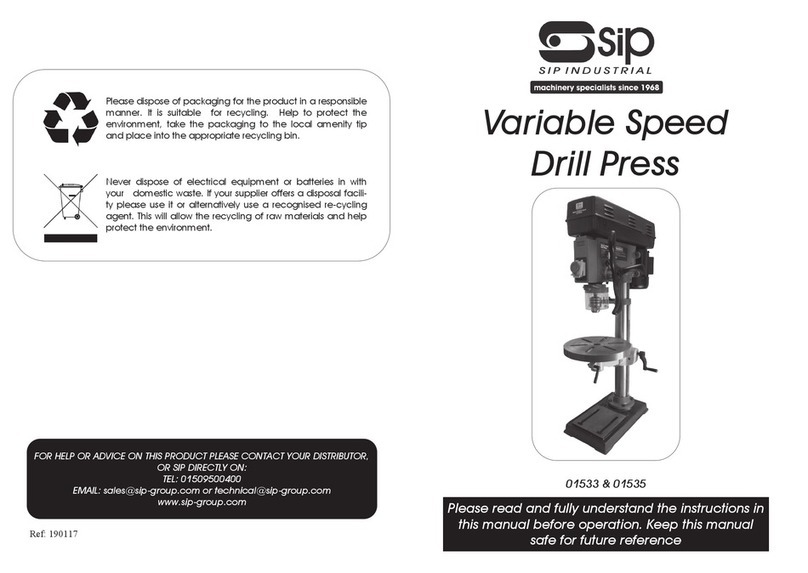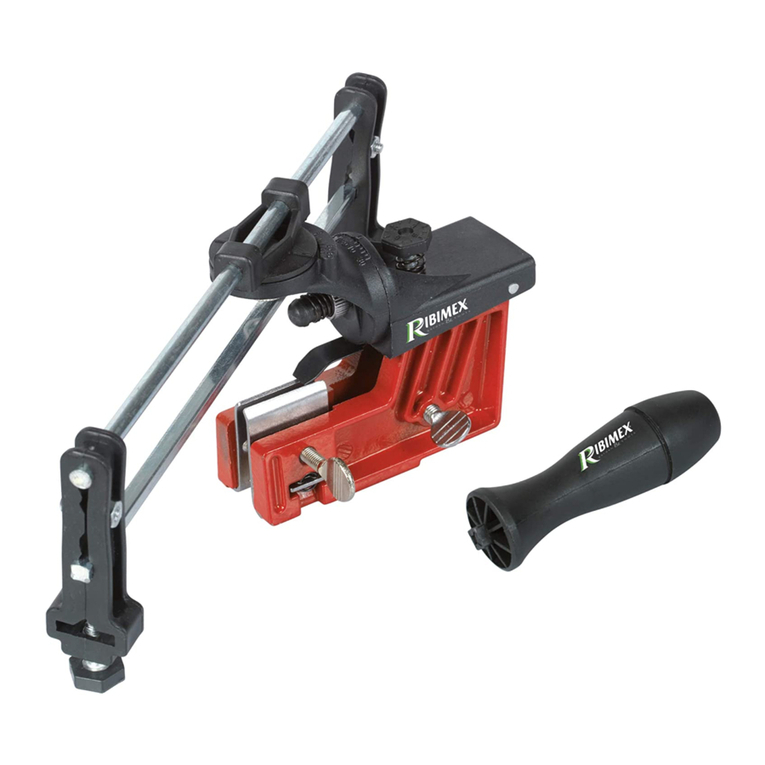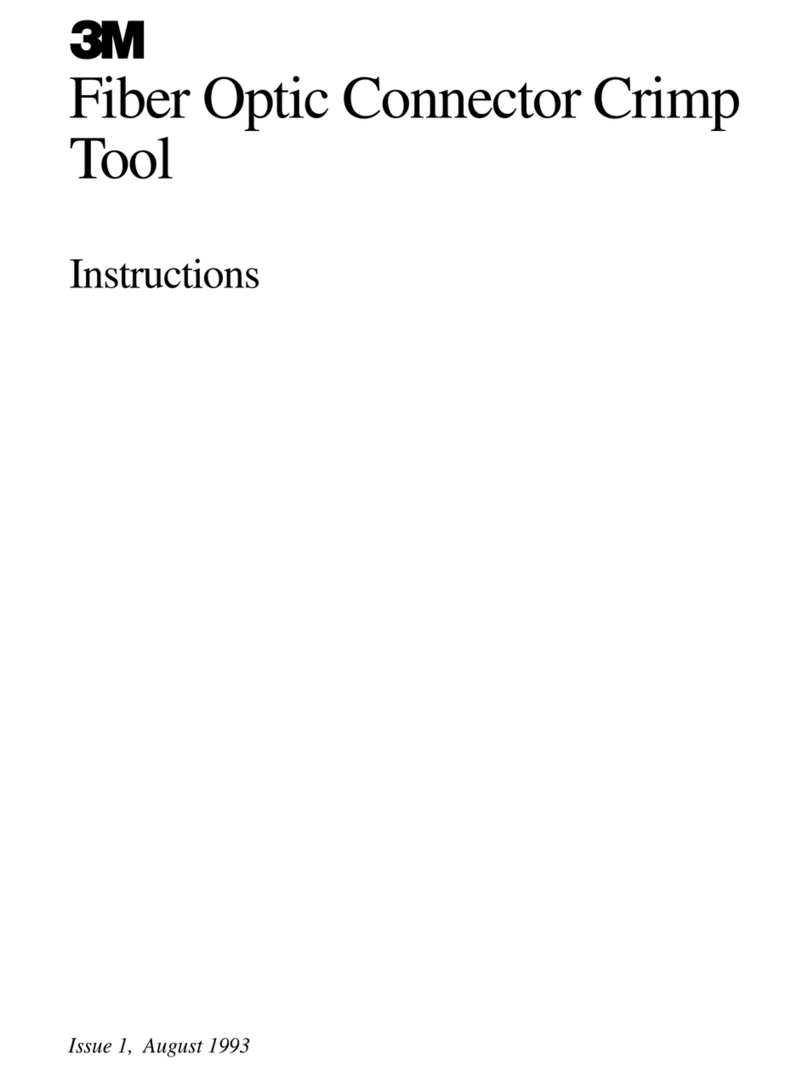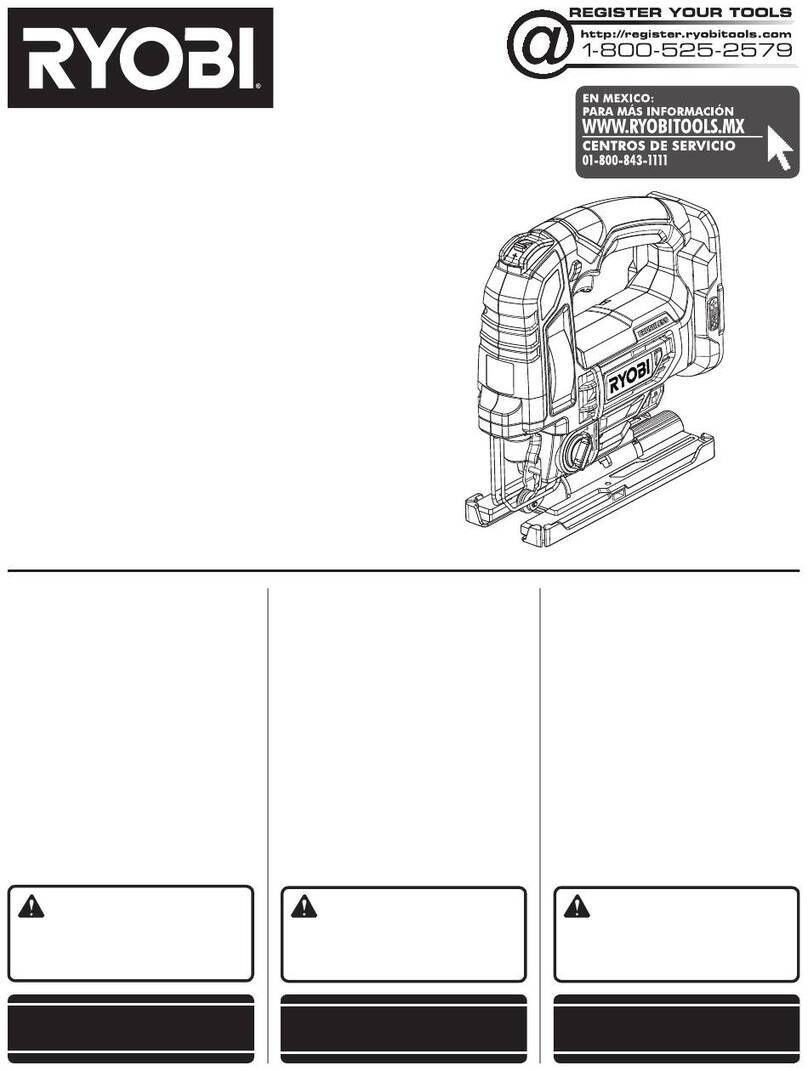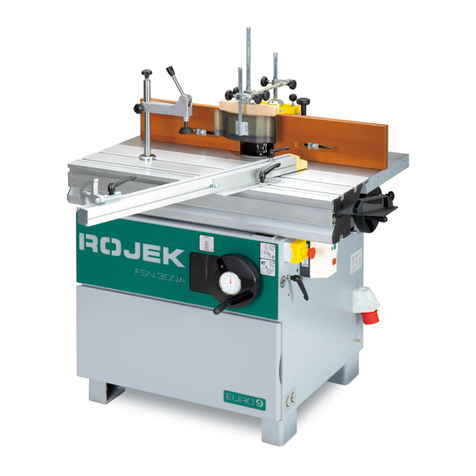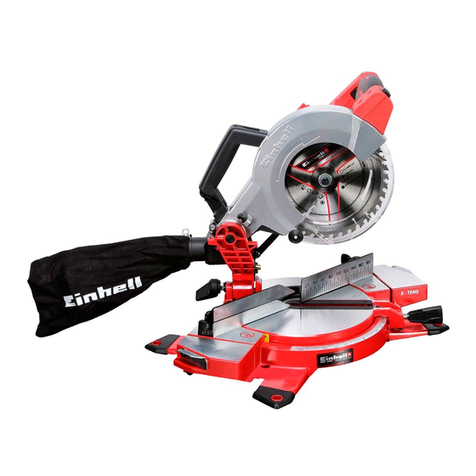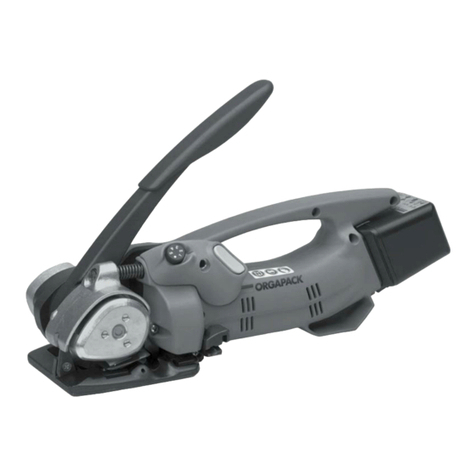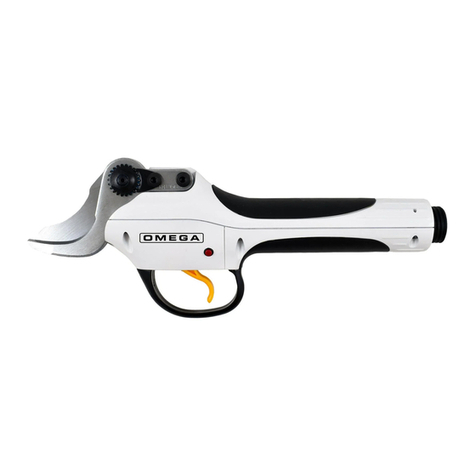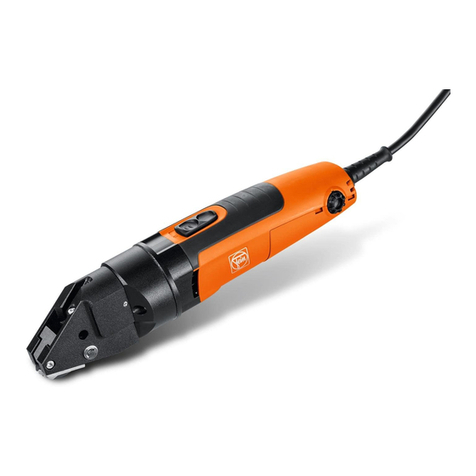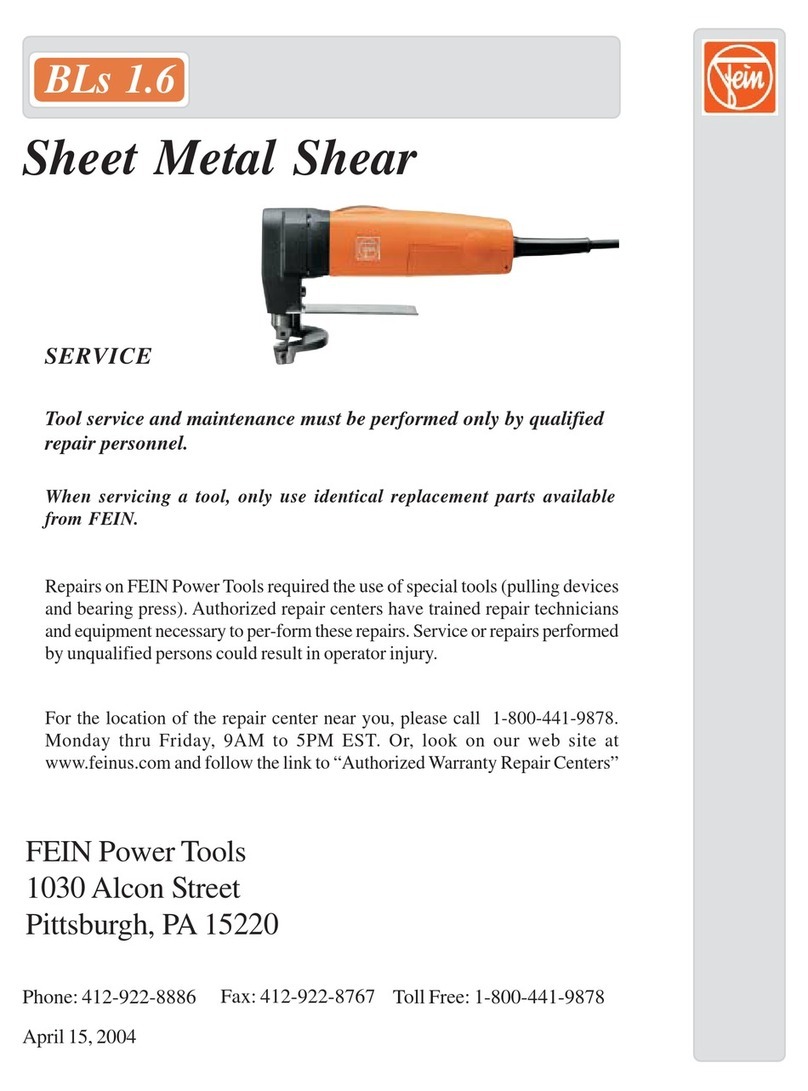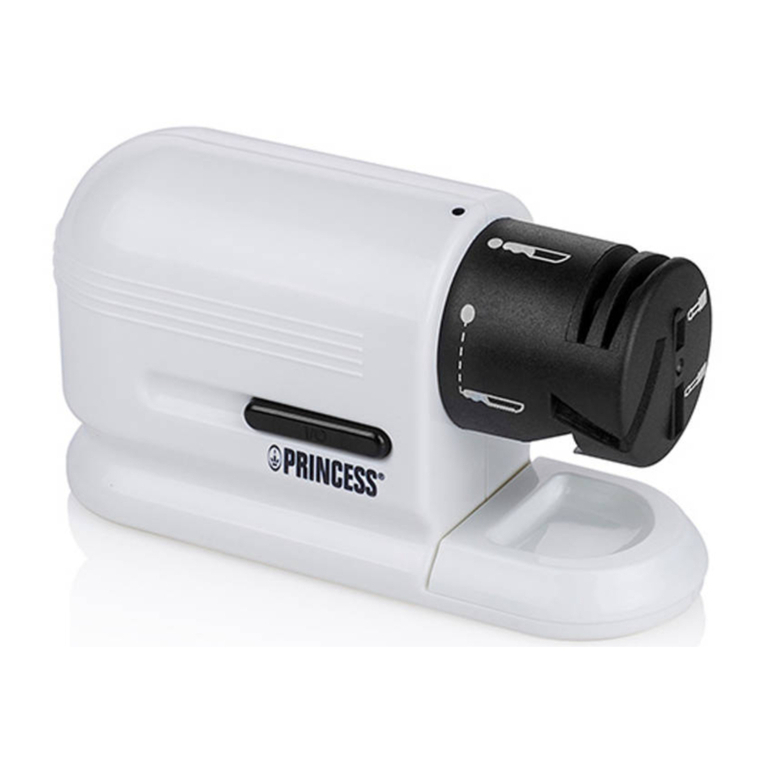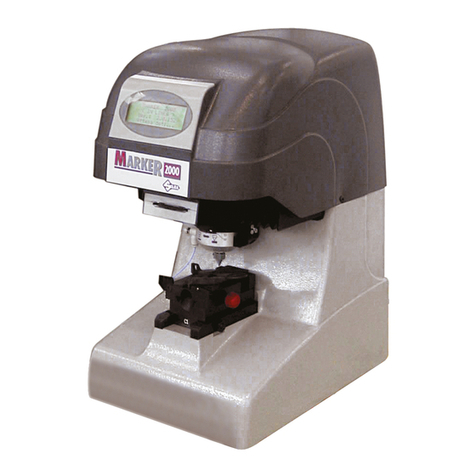
9
6 Installation
During installation, the safety regula-
tions in chapter 4 and the safety pre-
vention rules must be strictly observed!
Ensure that the compressed air supply is
shut off during installation or when
working on the vibrator and air supply
lines.
Mounting the Vibrator:
The housing of the piston vibrator is
screwed to the mass to be vibrated.
The mounting surfaces must be
absolutely level (±0.1mm flatness), so
that vibrator has full area contact and
the housing does not distort when the
fixing screws are tightened. The
surfaces should also be free of any
paint residues or weld burns. Tension in
the housing can cause mechanical
damage.
Directional vibrations are generated.
The working moment of the free-
swinging piston (M = mass x distance)
is determined by the amplitude.
In the standard version NTP B+C, the
piston strikes against an elastomer
impact plate, creating a rubber
hammer effect.
Version B has no impact plate,; the
piston swings noiselessly against a
cushion of air.
If the device is required to produce
hard impacts, either a steel plate is
inserted into the base plate or the base
plate is completely removed. This
results in hard impacts against the
surface to which the device is
attached.
Please consider during installation: The permissible temperature range
must not be exceeded or fallen short of during operation. Versions for
other temperature ranges available upon request.
In critical installation situations, it is necessary to secure the vibrator with
a safety rope.
